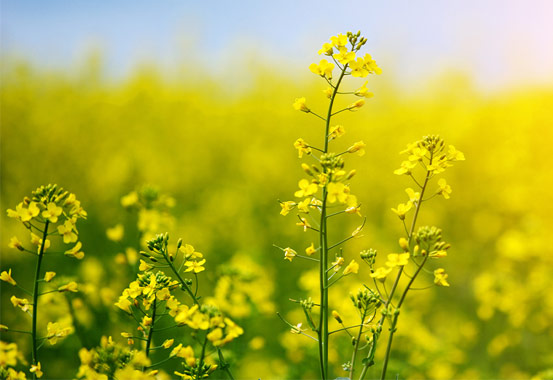- Home
- About
-
Our Products
- Grains
- Oil seeds
- Meals
- Oils
- Derivate
- UBM Group
- UBM Community
- Press
- Contact
In the past few years, rapeseed cultivation has increased dramatically in the European Union, especially in countries like Germany, where renewable sources of energy are becoming important to national interests. Rapeseed oil has been proved to be one of the best sources for biodiesel, and an increasing amount of rapeseed meal has raised the level of interest among nutritionists and producers alike. In general, rapeseed is considered a good replacement, if only partially, for soybean meal in most animal diets.

Rapeseed (Brassica napus and Brassica campestris), which is a member of the same family as mustard, cabbage, and turnips, is a major oil-yielding crop, ranking third after soybeans and palm. It is cultivated in countries with colder climates that are usually unsuitable for growing soybeans. Major producing regions include the European Union, Canada and USA, China, India and Australia.
Rapeseeds are first crushed to remove the oil, yielding rapeseed cake as the first by-product. In most cases today, the cake is further processed through solvent extraction, yielding rapeseed meal as the final product (Table 1). On average, rapeseed meal contains on an as-fed basis (90% dry matter) 36-38% crude protein, 10-12% crude fibre, 1-2% lipids (oil), 6-8% ash, less than 1% calcium, and 1.2% total phosphorus. Composition varies widely depending on factors such as origin, growing conditions, the manufacturing process and degree of oil extraction.
If rapeseed with normal (higher) levels of glucosinolates and erucic acid is to be fed to livestock then, naturally, usage must be limited to avoid reduced performance and ensure animal health. In general, as in most cases, ruminants are less susceptible to anti-nutritional factors than monogastric animals. Thus, dairy cattle should be fed no more than 2-4 kg of rapeseed meal per head per day. In beef cattle, rapeseed meal should not exceed one quarter of the total concentrate fraction of their ration. In sheep and goats, rapeseed should not exceed 20% of their total ration. In pigs, rapeseed should be used only in diets for finishing pigs and gestating sows (less than 10% of total diet). Young poultry should receive no more than 2-3% of their diet as rapeseed meal, whereas up to 5% may be fed in older birds. In general, caution is the key word when using rapeseed meal for the first time or rapeseed meal from a new source. It is always best to start with very low inclusion levels and gradually increase them until an optimal balance between performance and cost of production is achieved. Here, the advice of a qualified nutritionist is strongly recommended.